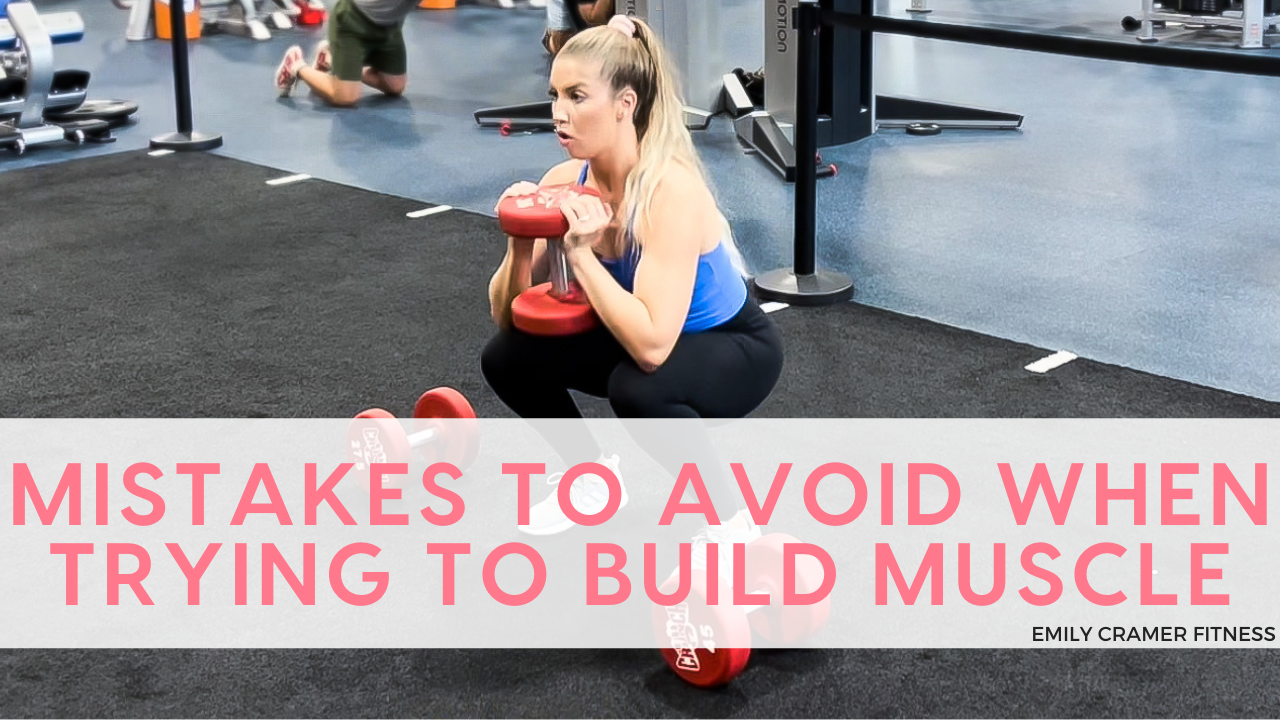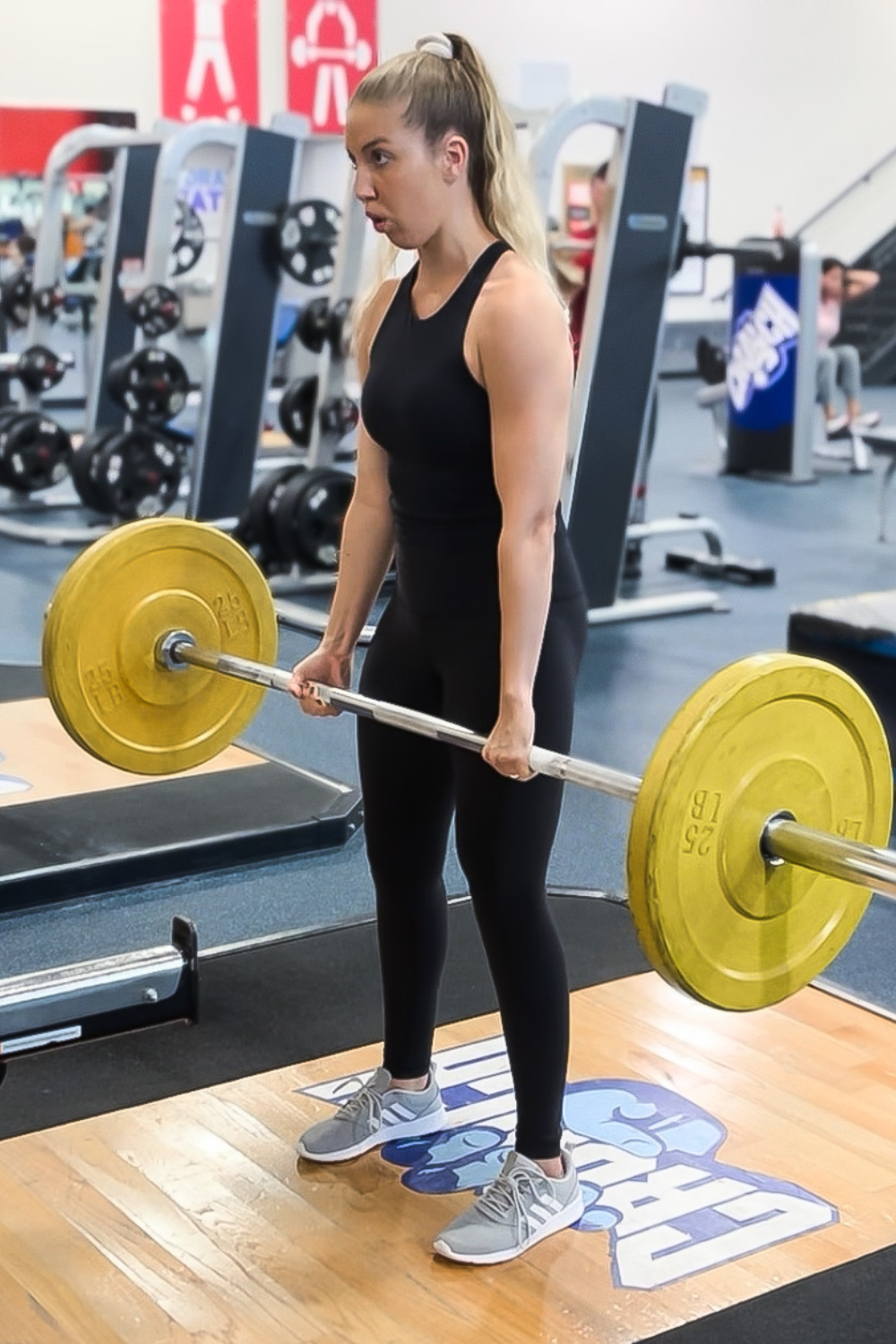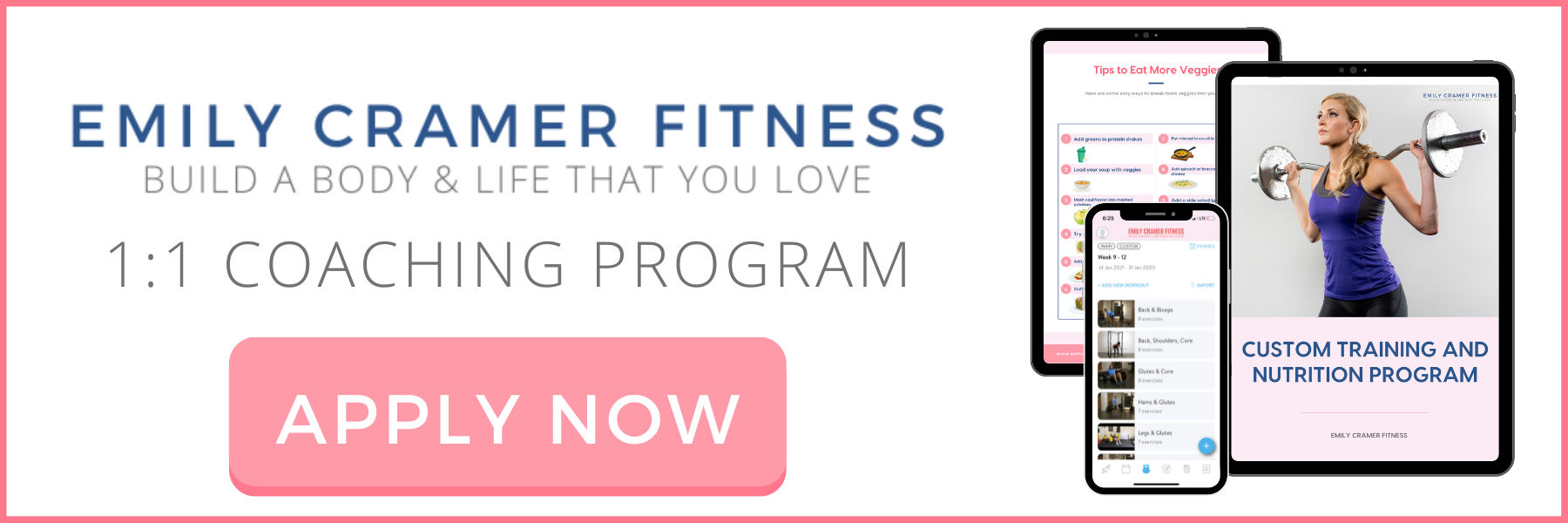
Mistakes to Avoid When Trying to Build Muscle
Hey! In case you're new here, my name is Emily. I am an online health coach with 6 years of experience, certified personal trainer, previous spin and boot camp instructor, and a retired national level bikini competitor. I've spent years building a muscular, feminine physique I am so proud of, and now I have the absolute pleasure of helping other women do the same! My passion is to help you reach your goals using realistic long term habit changes. It's about creating a balanced lifestyle - no extremes and no overwhelm.

In this post, we're going to talk through the 9 mistakes to avoid as you progress along your journey to build muscle. Let's get to it!
1. Not consuming enough protein

You need to ensure you’re consuming enough protein to efficiently increase muscle mass, and assist with recovery/repair post workout. I like to aim for 1g per pound bodyweight for my clients to ensure their body has what it needs for optimal body composition and muscle growth.
On the flip side, it’s important to note that more isn’t always better. If you’re consuming excess protein, it will simply be stored as fat versus being used for muscle building purposes. Don’t take your protein consumption up as high as you can with the intention to build faster. There is an upper limit to protein’s usage for your muscles.
2. Swinging the weight / Using a weight that’s too heavy for you to control

This is something I notice among beginners and seasoned gym veterans alike. Many gym goers do not control the weight through the entire movement. When the weight moves in the same direction as gravity (i.e. when you’re lowering it), the goal is to decelerate rather than simply drop the weight.
When you slow down the drop, your muscles are still working hard! This portion of the movement is called the eccentric portion of the movement and it’s where the greatest strength gains happen IF you’re controlling the weight.
That being said, pick a weight that you can control through the full movement. If the weight you’re using is so heavy that you can only manage to lift it up and then drop it quickly, it’s too heavy. Pick a lighter weight and keep the movement slow and controlled all the way through.
3. Using a weight that’s too light
On the other hand, be careful not to pick a weight that’s too light. When deciding on a weight, I recommend to my clients that they pick a weight that they can pump out the whole set with good form and still feel like, if they had to, they could pump out an additional 2 reps. No more, no less.
If you feel like you have another 10 reps left in the tank after you finish your set, you’re going way too light and you won’t create the stimulus needed to change your muscle. Your muscle is going to grow (or shrink) to meet the needs required of it. So if you’re lifting challenging, heavy weights (with good form) your muscle will grow over time to adapt to that level of work.
4. Never shifting the intensity of your workout 
Your body adapts over time to the training stimulus you implement. If you’re doing the same weight sizes, reps, and sets every week, you will plateau. I talk more about different techniques for upgrading your training intensity HERE.
In short, something needs to change over time for you to continue to see changes: weight used, reps, sets, time under tension, and rest time are all useful options. This also means you need to do the same workouts each week for a period of time so that you can increase the challenge and intensity. If you're switching your workouts every week, you're not going to see the same progress.
5. Overtraining a muscle

Again, there is definitely such a thing as too much of a good thing.
If you’re overtraining a muscle, you’re actually working against your goal. Training the muscle causes you to tear it down. It needs time in between training sessions to recover and rebuild. You can still train just ensure that your split allows for 48 hours of recovery at least before training that same muscle again.
6. Overdoing cardio

I am a huge advocate for keeping cardio in your plan, as it is extremely valuable for your heart, your brain, and your overall sense of wellbeing. However, be reasonable about how much cardio you do on a weekly basis if your primary goal is to build muscle. It is perfectly fine to do 10-30 minutes of cardio 3-4 times a week. Beyond that frequency, you’re really just working against your cause, as heavy cardio will continue to tear down the muscle you’ve built.
7. Under Eating

The most efficient way to build muscle is to weight train while in a caloric surplus. This means you’re going to eat more than your usual amount of food in order to grow. The extra calories are going to help you perform at your best in the gym, feel stronger, lift heavier, and provide more nutrients for increasing muscle tissue.
It’s not that you can’t add muscle while in a caloric deficit. It’s just that it will be significantly harder and slower. You will see greater progress in the long term by truly dedicating yourself to building now and then entering a deficit later on to reduce body fat and create definition.
8. Getting too Wrapped Up in the Minor Details I.e. supplements, meal timing, etc.

Sometimes, the amount of information that’s out there about how to reach our fitness goals just totally overwhelms us. Often, we get caught up in the teeny tiny nuances that make the smallest difference in our progress. It’s no one’s fault. It’s just that all of the fitness content we see on tv, in magazines, and on social media leads us to believe getting fit is a lot more complex than it REALLY is.
I get a lot of questions regarding supplements, meal timing, what to eat pre and post workout, etc. Even thinking about these things in the beginning is putting the cart before the horse. And even after you are deep into your fitness routine, none of this matters as much as consistency, training with intention, and being diligent about sticking to your healthy nutrition habits.
Focus on the big picture. Focus on sticking to your training routine and giving every session your full effort. Focus on eating the calories your body needs to reach your goals every single day. These are key.
9. Lack of Consistency

This might be the most obvious mistake but it’s also the most impactful. Creating a plan that feels sustainable for you in the long term is vital to your success. If you train like an Olympian 7 days a week for 3 weeks and then give up because you’re exhausted, you fall way behind the person who has successfully continued to train 3 days a week for 30 minutes for the last 8 months. Be reasonable with your commitment to the gym and you will adhere to your plan better, creating the best possible results.
Are you ready to build a strong feminine physique you can keep for life?
Girl, it sounds like it’s time to apply for Emily Cramer Fitness 1:1 Coaching!
My 1:1 coaching program is for you if:
✔ You want to build lean, feminine muscle without your workout or nutrition program taking over your whole life. You want something sustainable and realistic so you don't just keep starting and stopping.
✔ You want help learning how to eat and workout for your goals and how to consistently execute on these healthy habits
✔ You've been struggling with all or nothing thinking. You're tired of feeling like you need to do everything perfectly in order to see progress.
✔ You want to radiate confidence and strength - not just look fit, but feel it too!
✔ You want to make changes surrounded by women who get you, get your goals, and make fitness fun.
Not convinced it could work for you? Take a look at my Client Success Stories.
I look forward to coaching you!
To Your Good Health & Success,









